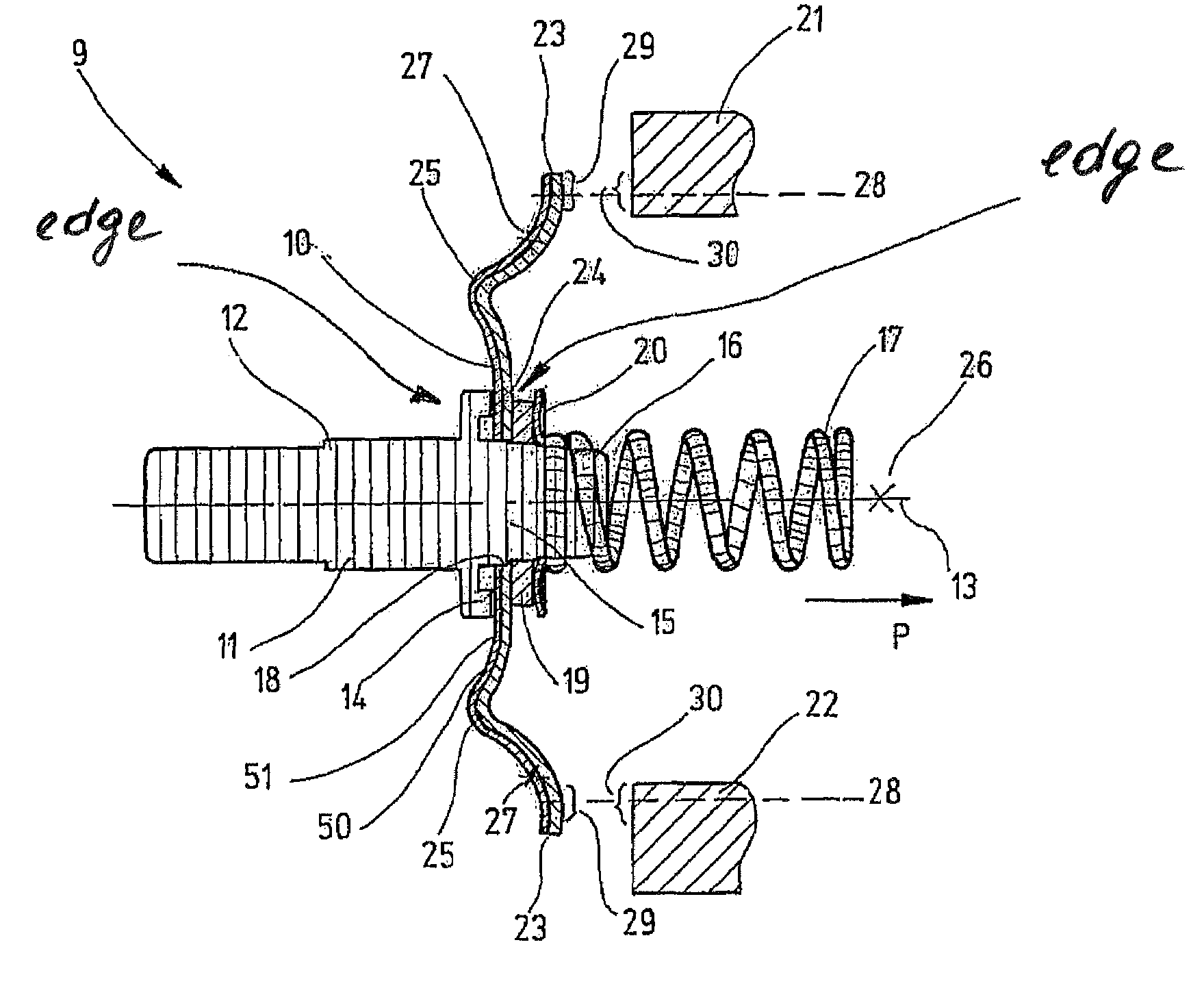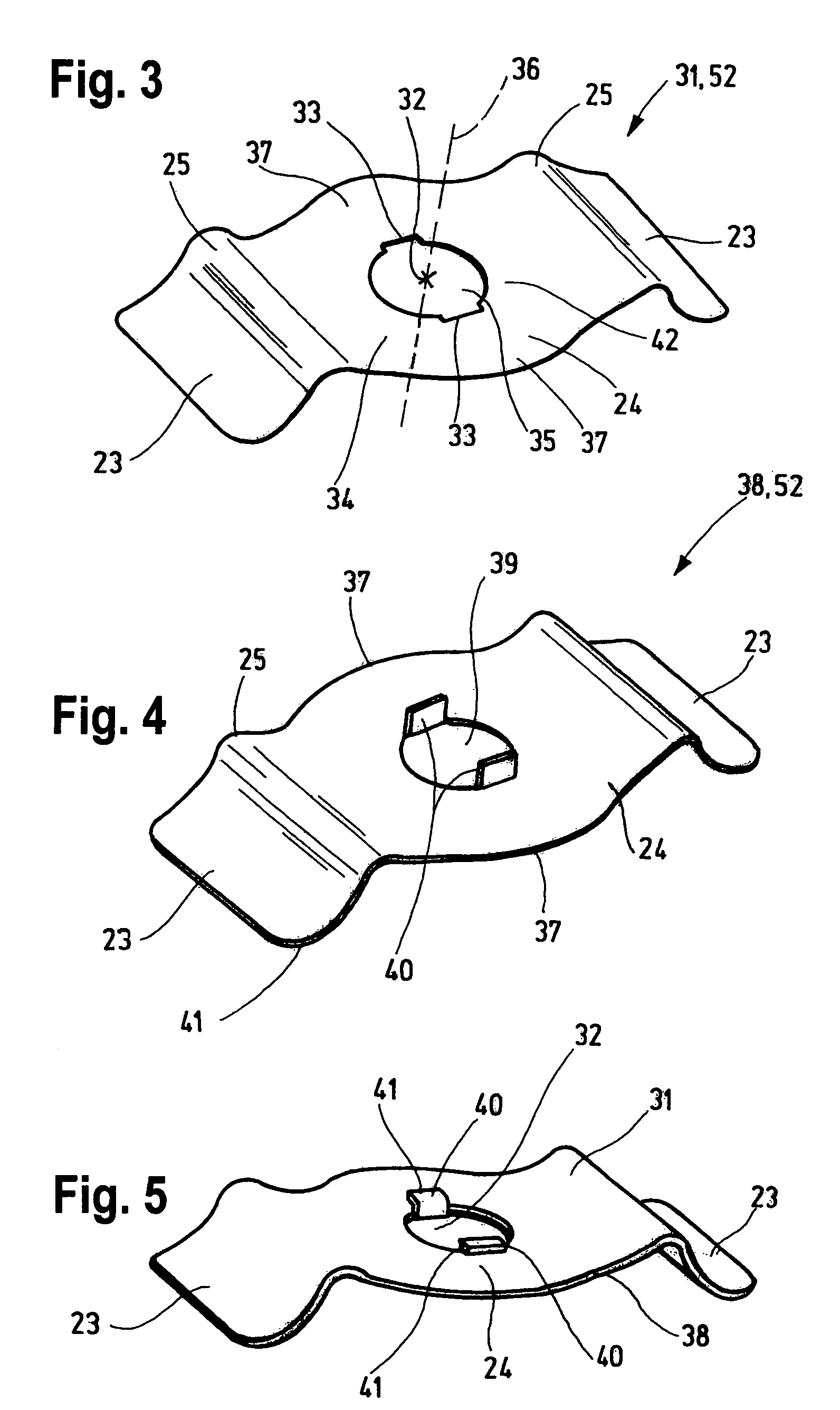Relay with self-resilient contact bridge
a self-resilient, contact technology, applied in the field of relays, can solve the problems of contact interruption, contact face burnout, contacts fusing to one another, etc., and achieve the effect of worsening the contact-making process
- Summary
- Abstract
- Description
- Claims
- Application Information
AI Technical Summary
Benefits of technology
Problems solved by technology
Method used
Image
Examples
Embodiment Construction
[0024]FIG. 1 schematically shows a relay 1 with a magnet coil 2 and an armature 3. A contact bridge 10 is associated with the armature 3. The contact bridge 10 cooperates with two counterpart contacts 21 and 22. A load current circuit 6 with at least one consumer 7 is also shown symbolically. The relay 1 has a housing 8, shown only schematically. Upon excitation of the magnet coil 2, the armature 3 is actuated and causes the closure of the load current circuit 6, by moving the contact bridge 10 until it rests on the counterpart contacts 21 and 22.
[0025]FIG. 2 shows the region of the relay 1 that is relevant to the invention, namely a contact bridge assembly 9, comprising a contact bridge 10 and a contact bridge holder 11 that is embodied as a switching pin 12. The switching pin 12 extends coaxially to the switching axis 13. The contact bridge holder 11 has a contact bridge bearing surface 14 and a contact bridge receptacle 15 that extends coaxially to the switching axis 13. The cont...
PUM
 Login to View More
Login to View More Abstract
Description
Claims
Application Information
 Login to View More
Login to View More - R&D
- Intellectual Property
- Life Sciences
- Materials
- Tech Scout
- Unparalleled Data Quality
- Higher Quality Content
- 60% Fewer Hallucinations
Browse by: Latest US Patents, China's latest patents, Technical Efficacy Thesaurus, Application Domain, Technology Topic, Popular Technical Reports.
© 2025 PatSnap. All rights reserved.Legal|Privacy policy|Modern Slavery Act Transparency Statement|Sitemap|About US| Contact US: help@patsnap.com



